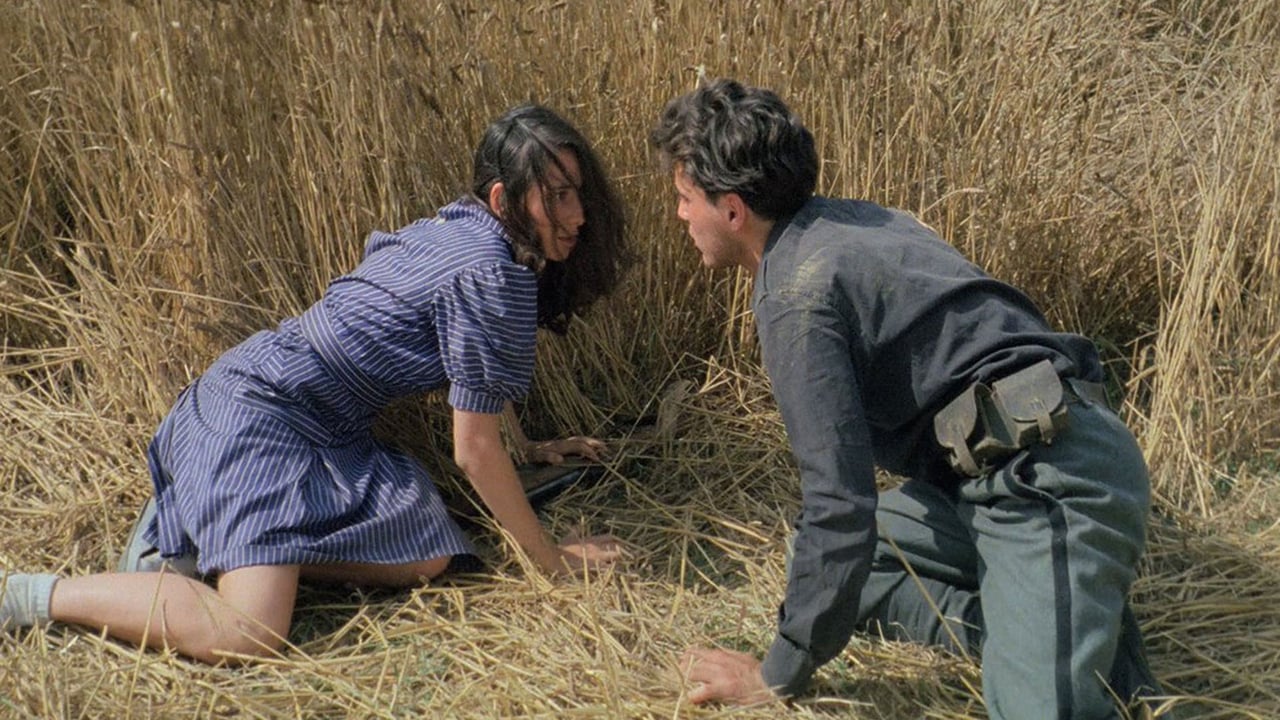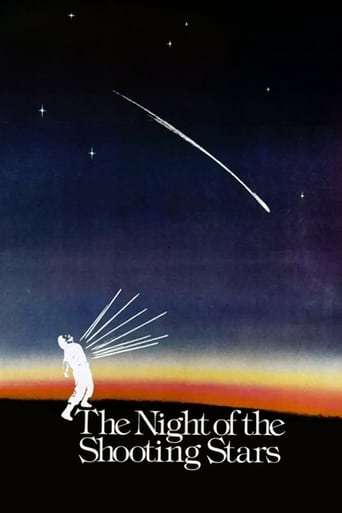

I'm almost lost for words to describe how incredibly dull and poorly made this movie REALLY is. Did I even see the same movie that other reviewers have raved about? The DVD cover that I have with this movie indicates that it won the Grand Jury Prize at Cannes. How in the name of all that's holy could that have happened?The several words I have to describe this lot of dross go something like this: boring, dreadful script, poorly directed, even more poorly acted, banal, schmaltzy, cheesy and totally unconvincing. The scene of the gunfight in the wheat field was so laughably bad I just couldn't believe it.The Italians can make good movies - Cinema Paradiso is at the top of my list but this one is certainly NOT a great movie. It's not really a movie at all. I was very glad when it ended.This is NOT the worst movie I've ever seen - but it's bloody close!!
... View MoreRapturous. A movie full of risks, yet steered with a completely confident hand. A small town in 1944 Italy is caught in the last stages of World War II; it is rumored that the American army is approaching to liberate them, and the Fascists holding the town have tightened their grip in response, mining all of the houses and ordering the populace to take shelter in the church. While most of the town complies, a few brave souls decide to venture out into the woods at night to try to locate the Americans themselves. What happens to them on the journey is shot through with horror and suffering, yet it is also as fantastical as "A Midsummer Night's Dream"--the townspeople have been through so much that life itself seems unimaginably absurd. And although the war has taken almost everything from them, it has also smashed class barriers and social restraints. Now at last (for example) the elderly Galvano can admit his love for the rich woman he could never think of approaching in peacetime.Few films give us so many treasures; the heavenly vision granted to a young woman killed by soldiers in the instant before she dies; the improvised Communion in the village church, with the congregants dividing their own bread among them; the six-year-old narrator Cecilia (who, in a framing device, is telling the story in flashback as a young mother to her child at bedtime) finding a watermelon in the forest and smashing it with her bottom; a horrifying 15-year-old fascist who tortures and kills his victims in order to make his father proud; Cecilia tumbling onto a basket of eggs and, having been punished by her mother, spitefully smashing the two eggs that survived the fall; a teenage girl in the woods at night, hearing the distant blasts as her home is destroyed and remembering the first time she stripped in front of her bedroom mirror as she tosses away her housekey; the climactic series of one-on-one and two-on-two skirmishes in a wheatfield as the soon-to-be-defeated Fascists and the desperate townspeople--most of whom know each other, some of whom are lifelong friends--grapple to the death. It's slapstick black comedy, yet timed so well it just seems like the natural state of affairs in war--there's nothing arty or pretentious about it.
... View MoreI recently spent two weeks near San Miniato (home town of the directors and setting for the film), so part of this film's charm for me was to revisit the beautiful Tuscan countryside. But it is also a moving portrayal of a painful moment in Italian history, as the advancing Allies, the retreating Germans, the Fascist Blackshirts, the anti-Fascist partisans, and deserters from the Italian Army all converge on a small hilltop town in Tuscany (called "San Martino" in the film). Meanwhile, ordinary civilians just try to survive and keep their dignity. Some of the townspeople accept the Germans' offer of sanctuary with the bishop in the cathedral; others strike out across the countryside to find the Americans. Each group faces the unanticipated consequences of their choices. I have the feeling that many of the actors were non-professionals - entire families appear in the cast list - and the editing & special effects are also kept very simple. (There's a great deal of violence, but almost no cinematic "blood and gore.") But perhaps that's in keeping with the somewhat "naive" perspective that the film strives for - the story is told through the eyes of an eight-year old girl. For a book that focuses on the same region and period, I'd recommend Iris Origo's "War in Val d'Orcia."
... View MoreIn the World War II, part of the citizens of the Italian Tuscan town of San Martino decide to leave their homes in the night of San Lorenzo, escaping from the Germans, and searching for the Americans. In the way, they fight against the Fascists, and most of them survive. The story is told by the character Cecilia, an unpleasant six years old girl at that time. Yesterday I watched this famous movie for the first time. I do not know whether was the high expectation I had, but I find it too personal and disappointing. The amateurish cast has not passed emotion to me. The story is very simple and too personal and has not engaged me. I would not like to be unfair, but I have not seen anything special in this small budget realistic movie. I usually do not read any comment of a film before writing mine, but I read the review of Howard Schumann (Vancouver, B.C) and I found it excellent. My vote is six.Title (Brazil): `A Noite de São Lourenço' (`The Night of San Lorenzo')
... View More